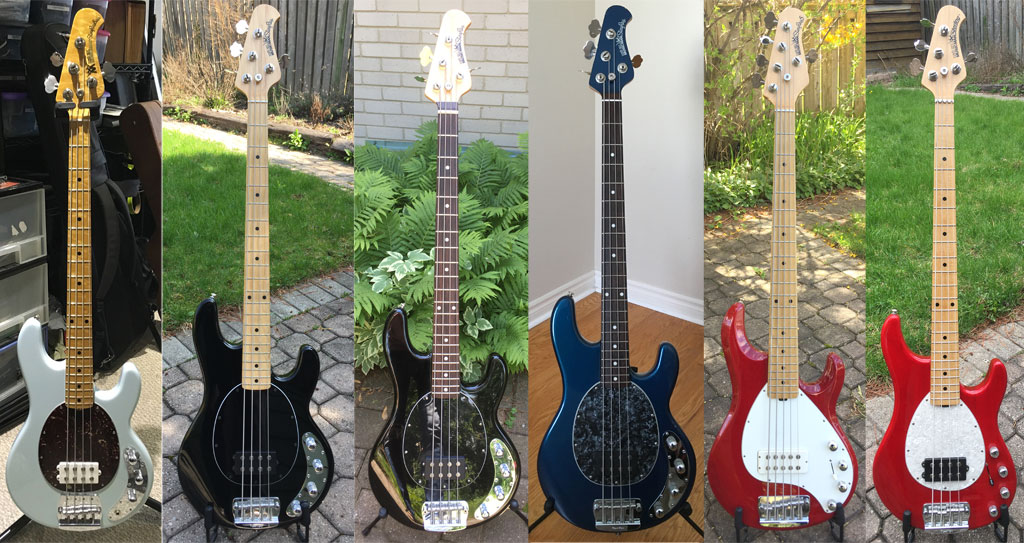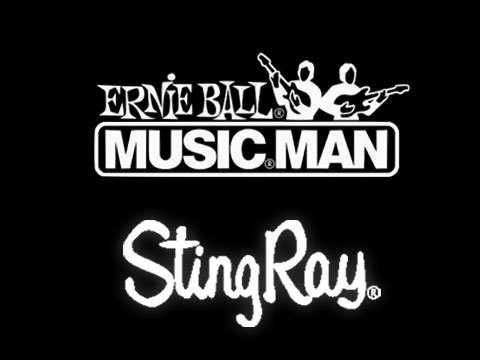Beside the jazz or precision, the Musicman Stingray is probably the 3rd most popular electric bass out there. Design by Leo Fender and Tom Walker and test drive by Sterling Ball , the bass was introduced to the market in 1976 by Musicman, and later on the company became Ernie Ball Musicman.

No matter how well your J or P bass serves you, very often you’ll hear bass sound with that unique aggressive upper mid that’s just something missing from the P and J . and after 15+ years of playing bass. Eventho Stingray is not my favourite instrument; I just realized every few years I’ll need to have a Stingray to get something done . After spend the past 6 years with fancy boutique instruments, the Stingray is just holding its place there which no one else do it better than EBMM . It’s always fun to have a Stingray hanging around.
I’m lucky enough to get to play around a dozen of them .. They are all great quality instruments and about 2-3 of them were superb. are and here’s a few little things I’d like to share when picking one.
1. Pickup configuration. H / HS /HH .
- Go with the single H, that’s the signature Stingray sound, out of the box. Variations throughout the years made it more versatile. But if you are going with a Stingray, just go with what it does the best. Single H, no switch, no learning, no BS, great chunky tone out of the box.
2. Maple vs Rosewood fingerboard
- Maple has faster attack and slightly brighter, and has that unique snappy high tone. Some people like it a lot but I don’t. I personally prefer the rounder high, slower attack and sweeter sounding rosewood fingerboard. *make sure you wash your hand often when playing a maple fingerboard.
3. Alder or Ash body
- It’s kind of hard to tell when they paint the bass in solid colour, but I believe there are more Ash body than Alder . To me, I found the better sounding one are normally the heavier ones. It’s not always true, but I found heavier Stingray normally sounded bigger. The body has that resonate frequency that vibrates your heart(well, body), even in a low volume and sometimes unplug.
4. Standard vs Classic vs Neckthrough
- I seriously think EBMM has perfected the design with the 3 Band boost/cut EQ in the 80s or 90s . While many of the classic models are very finely made and sounded good by nature . The standard Stingray has no problem archive the oldschool vintage sound at all, and does it better. In general; if I gig regularly. I will have more good sounding day with the standard Ray compare to the Classic.
=====================
Update - Feb 2024
Here's a few more things to add after 6 years. My love for Stingrays remains and there are probably another good dozen of Stingray, Sterling basses I've played. Few more details to add:
5. 2-Band vs 3-Band preamps
- 3-band preamps were introduced to the market in 1987' , and they still make the 2 band. IMO, the 3 band design perfected the modern bass design, the center-detent EQ pots clearly tell user where their current settings are . The 3band also work at some extreme settings (need to bring down the input gain) .
* here's something I learnt about the 2 band preamp. For a very long time I thought it's 2 band, boost only and I was wrong. The 2 bands are boost AND cut, it just does not have the center detent pot to tell you where the settings are. Player has to be familiar with their tool to perform with confident ..
6. Alnico vs Ceramic vs Neodymium pickups
- Stingray bass originally equipped with Alnico pickups, EBMM switched to Ceramic between 1992-2007(higher output, more upper-mid details, and more aggressive), and then went back to Alnico on put the Ceramic pickups on the Sterling line. Bongo was intruduced in 2003 with similar pickup/electronics (Basswood body, High output pickup, 4 band preamp) and in 2018, they introduced the Stingray Special with Neydymium pickups and the newly designed 18v preamp(some say it's the Bongo electronic design in the Stingray, at the similar time, they've also changed the body to 'Selected hardwood' instead of the always Alder/Ash, since the electronic determine the majority of the sound, and Ash is getting very hard to get at the time. ) To my ear, they nailed the classic Stingray in a professional way. It's cleaner with more headroom so it's less aggressive in comparison. This setup shines in the band mix. Few years later, they've released the Shortscale Rays with Neodymium pickup that's runs fully passive. I like mine, as a great passive bass. "My personal favourite amont them all would be the 3band with Ceramic pickups .. it's the most chunkiest and aggressive sounding of them all .. Alnico ones are more 'old' sounding in comparison and works well in many situations . Neydymium are nice and pretty . " they all have very distinctive voices.
======================
The neckthrough models are amazing, however the construction method has totally changed the responsiveness of the instrument, and it requires quiet a bit of time to get used to. Unlike Sterling(Like a brother to Ray), the neckthroughs are more like a cousin.
These are my honest opinions about this legendary instrument. Hopefully you can find your Ray soon!
Cheers!
tree
